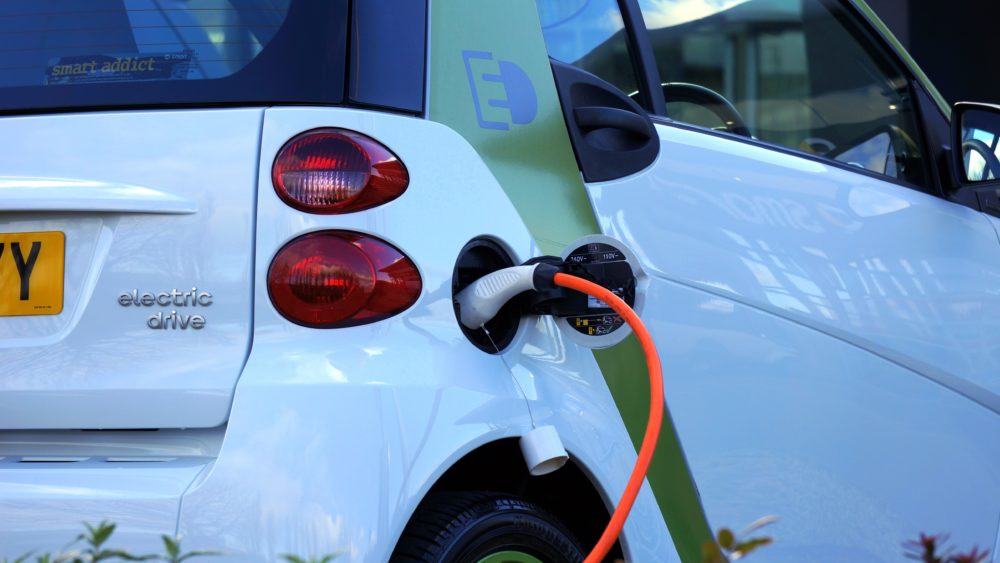Let’s start with a fact: electric vehicles (EVs) are better for the environment than internal combustion engine (ICE) vehicles. We should focus on promoting electric vehicles and not waste time trying to delay the inevitable. However, this is a difficult goal, especially when there’s a lot of false and misleading information being pushed out, whether by Toyota’s president or fake PR firms.
The oil and (some) automotive industries’ increasingly crude attempts to spread misinformation about electric vehicles is a bid to protect a business model increasingly recognized each day as harmful to the planet and to each and every one of us. Even recently, Aston Martin has found itself at the centre of a storm for not coming clean over its role in authoring a widely-debunked study that claimed electric vehicles are a more polluting option than ICE vehicles.
Let’s talk inequality
So all good? Well, it’s eminently possible to want a carbon-neutral, quiet, clean-air future but still have questions that haven’t yet been answered. How do we avoid giving low-income drivers — reliant on landlords or councils to provide domestic charging — the choice of sticking in an old internal combustion engine car or being forced to use expensive rapid chargers if they get an EV? Will the fuel of a tenant parking on the street with no choice of energy provider cost more than that of a senior manager who can plug into their solar-panelled house each night? In embracing a zero-emissions future, we need to make sure that nobody is treated unfairly or gets left behind.
The development in battery prices is rapidly creating the conditions that could give electric vehicles a significantly lower total cost of ownership. This means that at least one conviction of policy makers needs to be reexamined: the idea that more stringent fuel efficiency norms will determine the speed of electric vehicles adoption. However, charging infrastructure needs to be available for potential owners that cannot charge the car on their own driveway and fast chargers need to become abundant and cheap.
How does battery production impact human rights?
In considering the net impact of a transition from fossil fuels to electric vehicles, however, it is important to note that fossil fuel exploration and extraction has been associated with some of the most severe problems of human rights abuse, conflict and corruption in the world. The average scores on the Resource Governance Index for oil-producing countries (47 out of 100) and mineral-producing countries (48 out of 100) are virtually identical, signaling that mis-governance remains a challenge in both sectors. A recent Organization for Economic Co-operation and Development (OECD) survey of officials from state-owned enterprises identified mining as the industry with the second-highest incidence of corruption, with 50 percent of respondents saying they had observed corrupt acts. The sector with the highest incidence of corruption was oil and gas, at 63 percent.
The urgency in getting a lithium supply has unleashed a mining boom, and the race for “white oil” threatens to cause damage to the natural environment wherever it is found. But because they are helping to drive down emissions, the mining companies have EU environmental policy on their side. Everyone having an electric vehicle means an enormous amount of mining, refining and all the polluting activities that come with it. In the so-called Lithium Triangle of South America vast quantities of water are pumped from underground sources to help extract lithium from ores, and this has been linked to the lowering of groundwater levels and the spread of deserts. Similarly in Tibet, a toxic chemical leak from the Ganzizhou Rongda Lithium mine poisoned the local Lichu river in 2016 and triggered widespread protests in the region. Europe will need to scale up its battery recycling capacity: even in a scenario projecting only moderate uptake of electric vehicles by 2030, the current Li-ion recycling capacity will not be able to cope with projected demand from exhausted electric vehicle batteries.
In the case of cobalt (also used for cleaning fossil fuel), 60% of the world’s supply comes from the Democratic Republic of the Congo where large numbers of unregulated mines use children as young as seven as miners. There they breathe in cobalt-laden dust that can cause fatal lung ailments while working tunnels that are liable to collapse. However, electric vehicle manufacturers are transitioning away from cobalt: Tesla’s current vehicle batteries contain less than three percent cobalt and the company has announced that their next generation of batteries will be cobalt-free. The negative human and environmental consequences of cobalt mining are indeed real and well-documented. However, a serious solution to the exploitation of mine workers involves a comprehensive national trade policy and an economy-wide effort to curtail the use of cobalt.
Debunking myths
We should face these challenges in order to make mining more environmentally sustainable. Existing problems should not serve as excuses for pearl clutching and renewables bashing before taking a ride back in a far worse fossil fueled car. Misleading reports about electric vehicles generally rest on six faulty assumptions:
- Overestimating battery manufacturing
- Underestimating battery lifetime
- Assuming an unchanged electricity mix over the lifetime of the BEV
- Using unrealistic tests for energy use
- Excluding fuel production emissions
- Lack of system thinking.
Professional debunkers have already explained the flaws of these ‘studies’ and that proper calculations show electric vehicles already emit less than half the greenhouse gasses of their fossil fueled counterparts. If we speculate about a future in which production and driving are done on renewable energy this results in at least ten times less emissions than what is achievable with combustion engines using fossil fuels.
A study recently published in Nature found that current models of electric vehicles have lower life-cycle emission intensities than current new petrol cars in 53 of 59 world regions, accounting for 95% of the global road transport demand. Relative differences range from electric vehicles being around 70% less emission intensive per vehicle-kilometre in Iceland, Switzerland and Sweden, to being 40% more emission intensive in oil-shale-dependent Estonia.
In 2030, under the current technological trajectory and the end-use without power policies scenario, the resulting average emission intensities of EVs do not exceed those of fossil-fuel based alternatives in any of the ten countries with the highest transport and heating demands, even without additional decarbonization policies in the power sector. This implies that in the medium term, in almost all cases, the more effective policy strategy for reducing transport emissions is to push electric vehicles instead of supporting the uptake of more efficient fossil-fuel based technologies.
Laws are too timid: the case of Italy
Despite these evidences, the Italian Parliament gave the green light to a package of incentives which is targeting so-called “Euro 6” thermally efficient vehicles, as electric and hybrid cars still have little foothold in Italy. The incentives, strongly pushed by car dealers in order to empty their forecourts of unsold vehicles, encourage the purchase of Euro 6 cars that emit up to 110 grams of CO2 per km (the EU target of 95g/km entered into force in 2020 and European car manufacturers must comply with it or face high fines).
In 2019 the FCA group, which owns Fiat, had to resort to forming a pool with Tesla — costing it €1.8 billion — in order to avoid more substantial fines for not producing and selling zero and low-emission cars. On the eve of the launch of the Fiat500e, FCA’s first fully-electric mode, the Italian government should have allocated funds to new technologies only. A smart, forward-looking industrial strategy would ensure that the state loan guarantee for FCA comes with green strings attached and that the scrapping mechanism would be for zero-emission cars only.
A silver bullet?
The electrification of private transport is not a silver bullet — local and national policies need to reduce car ownership and use, and promote active travel and shared mobility. But electric vehicles could certainly replace conventional cars and largely eliminate GHG emissions in the process.
To support the transition towards electrified transport we should create institutions that will coordinate the various works and redistribute the benefits from the Global North and the Global South. As Yanis Varoufakis pointed out, a credible International Green New Deal should use transnational bond instruments and revenue-neutral carbon taxes — so that the money raised from taxing diesel can be returned to the poorest of citizens relying on diesel cars, in order to strengthen them generally and also allow them to buy an electric car.
The efficiency of a hybrid vehicle could theoretically become almost 50% higher than in today’s cars, but that would require a range of breakthroughs that are currently not on the horizon (we’re talking about plug-in hybrid, not “self charging hybrid”, which Michael Liebreich brilliantly described as “fossil-fueled car being marketed to people without knowledge by people without ethics”). Furthermore, the consumer interest in large SUVs with powerful motors outstrips the modest advances in efficiency, and if we take road testing as our benchmark there has been basically no improvement of CO2 emissions per kilometre in the last 20 years. If we aim for a world with billions of SUVs, we will still ruin our natural habitat and make living on this planet much harder.
Green New Deal for transport
There is no time left for new polluting vehicles to be rolling out of our factories. Our Green New Deal for Europe must amend the Vehicle Emissions Regulation to introduce a new ‘Euro 7’ standard that is consistent with zero-exhaust pipe emissions on all passenger vehicles. This will require that all new vehicles are fully electric, or powered by any other green technology. Buses or light vans should be included. All heavier goods vehicles must also be zero emissions, subject to specific exemptions made by the Commission on a temporary basis, to the extent enabled by technology. In addition, the Emission Performance Regulation should be changed to require that all vehicles that are manufactured have zero exhaust-pipe emissions, or that from 25 December 2021 no dividends or director compensation may be paid. Emission Performance Regulation (EC) 443/2009 contains the present rules. For each month of infringement, fines amounting to 10 percent of annual turnover shall be paid.
Beyond that, car ownership remains a luxury that not every member of society can afford. Without robust, inexpensive public transport networks and a continued focus on private car ownership, our transport systems will continue to allow exclusion of certain segments of the population. Another solution is to invest in fleets of clean, shared vehicles forming part of connected transport systems that minimise environmental degradation while maximising access and opportunity, which the Green New Deal for Europe points out. These can take the form of electric taxis operating on a car-pooling model, providing door-to-door services to all passengers at low cost. But one thing is certain: we need to radically reimagine the way we travel and commute.
Photo Source: Mike from Pexels.
The views and opinions expressed here are those of the author and do not necessarily reflect DiEM25’s official policies or positions.
Do you want to be informed of DiEM25's actions? Sign up here















